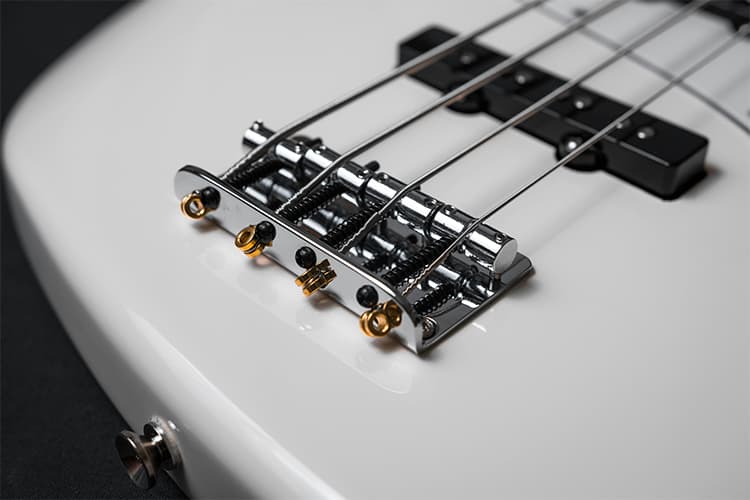Ever picked up a guitar and said to yourself, “Wait, how many strings does a guitar have?” You’re not alone!
While most of us picture the classic 6-string axe, the world of guitars is surprisingly diverse.
Did you know that some guitars can have up to 18 strings? That’s right – 18!
Whether you’re a beginner just learning how to play guitar or a curious music enthusiast, understanding guitar string counts is key to appreciating this versatile instrument.
Let’s dive into the fascinating world of guitar strings and uncover how these different configurations shape the music we love.
How Many Strings Does a Standard Guitar Have?
A standard electric or acoustic guitar has 6 strings.
Definition of a Standard Guitar
Alright, let’s talk guitars. The classic 6-string model, our trusty sidekick in musical adventures, comes with six strings, each singing its own note. We’re talking the usual tune-up: E2, A2, D3, G3, B3, and E4. This sound setup is the go-to for everything from shredding rock to strumming those classical vibes.
Brief History of the 6-String Guitar
The 6-stringer goes way back. Picture this: it’s the 18th century, and somewhere in Europe, lutes and early guitars are having a party. Thanks to our Spanish and Moorish pals, the guitar evolved into the six-string buddy we’re familiar with today. Fast forward to the 1900s, Les Paul and Leo Fender electrified things up, turning guitars into the megastars of modern music they are now.
Advantages of the 6-String Configuration
- Versatility: It’s the chameleon of instruments, fitting snuggly into any style of music.
- Ease of Learning: Six strings mean you won’t get lost in a sea of frets—perfect for newbies.
- Availability of Instructional Material: Books, videos, YouTube channels—it’s a treasure trove of learning goodies just waiting for you.
| Advantage | Description |
|---|---|
| Versatility | Fits all music styles seamlessly |
| Ease of Learning | Friendly chord shapes and scales |
| Instructional Material | Tons of learning aids available |
Famous Musicians Known for Playing 6-String Guitars
A bunch of legends have rocked the 6-string and made magic happen:
- Jimi Hendrix: Took the electric guitar for a wild ride we still talk about.
- Eric Clapton: Blues and rock’s go-to guy.
- Slash: Brought the heat with Guns N’ Roses.
- B.B. King: Blues royalty, always with “Lucille” by his side.
- Jimmy Page: With Led Zeppelin, he brought us riffs that are nothing short of legendary.
These rockstars and their 6-strings? They’re why the guitar’s got a permanent spot in the hall of fame.
Beyond the Norm: 7-String and 8-String Guitars
Let’s face it, when we think guitars, our mind’s eye flashes a picture of a 6-string beauty. But, for those craving a dash of something extra, 7-string and 8-string guitars are like a musical parkour course just waiting to be tackled.
Introduction to Extended-Range Guitars
Extended-range guitars break away from the usual six, bringing more flavor to the mix. Slap on an extra string or two, and voila—you’re looking at a range of sounds that can stretch over more octaves and moods! A typical 7-string guitar stacks on a lower B string, while its 8-string sibling usually adds yet another low F# or E string. These strings don’t just sit there looking pretty—they throw open doors to a whole new musical arena.
Benefits of Additional Strings for Different Music Genres
Adding more strings is like adding some kick to your morning coffee. Here’s where they shine:
- Metal and Djent: Rock harder and heavier with lower tunes. Crank up that power!
- Jazz and Fusion: Who knew strings could groove? More strings let you craft cooler melodic lines.
- Classical and Flamenco: Fingerpicking gets an upgrade, blending harmonics with finesse.
With this broad tonal range, musicians can paint their music with richer and bolder hues. It’s like upgrading from a crayon box to an artist’s palette.
Challenges and Learning Curve for 7 and 8-String Guitars
Sure, 7 and 8-string guitars are flashy, but they don’t come without a curveball. Those necks are as wide as a Texas skyline, not making them too friendly for newbies. Navigating these strings requires some nimble fingers and more accuracy.
For folks used to playing with six strings, switching to seven or eight is like learning to drive stick—takes some getting used to. But, with a bit of grit and perseverance, anyone can master those techniques and make those guitars sing.
Popular Musicians Who Use 7 or 8-String Guitars
Here’s a look at some rockstars who are taking these extended-range guitars for a spin:
| Musician | Guitar Type | Genre |
|---|---|---|
| Steve Vai | 7-String | Rock |
| Tosin Abasi | 8-String | Progressive Metal |
| Jeff Loomis | 7-String | Metal |
| Fredrik Thordendal | 8-String | Metal |
These legends don’t just play guitars; they rewrite what’s possible, showing just how much swag these 7 and 8-string beasts pack.
By getting a grip on what makes these guitars tick, we can vibe with the vast music universe they unlock. Whether you’re shredding like a pro or just picking up a guitar for jams, these extended-range guitars bring on the thrill of a musical adventure.
The Rich Sound of 12-String Guitars
Messing around with 12-string guitars can be a real treat. They’ve got a unique sound that’s like a musical hug, cozying up to different tunes and giving them some serious depth. So, let’s break it down.
Explanation of 12-String Guitar Configuration
Here’s the scoop: a 12-string guitar rocks with six pairs of strings—yep, that’s 12 strings in total. Each duo features a main string and a smaller buddy string tuned one octave higher, except for the B and high E pairs, which sing the same note. This setup bumps up the sound, making it pop way more than your regular 6-string.
Unique Tonal Qualities and Sound Characteristics
This beauty’s main trick? It’s got this built-in chorus magic. When you strum it, the mix of the thicker and thinner strings rounds out a sound so rich you’d think it just won the lottery. The tunes become bright and sparkly, like a musical fireworks show. It’s all about the layers, making these guitars a go-to for adding some warmth and fullness to your gig.
Types of Music Best Suited for 12-String Guitars
You’ll find 12-strings jamming across different types of music. They’re essential in folk tunes, bringing a hint of heavenly overtones. Rockers love them too, cranking up the rhythm or going wild with solos. And, don’t even get us started on pop—these guitars layer tracks with an almost symphonic vibe.
| Genre | Prominent Use |
|---|---|
| Folk | Rich strumming and fingerpicking magic |
| Rock | Patience-punching rhythm sections and solos |
| Pop | Layered, orchestral backing goodness |
Maintenance Considerations for 12-String Guitars
Keeping a 12-string guitar in tip-top shape calls for some extra TLC. More strings mean more tension—here’s how to keep it singing:
- Regular Tuning: You’ve doubled the strings, so tuning eats up more time, but it’s a must for top sound. Learning how to tune a guitar along with a good tuner will do wonders for you.
- String Replacement: Swapping out 12 strings ain’t quick—you’ll need some elbow grease. Check those strings for wear and replace them in pairs to keep things consistent.
- Neck and Body Care: Extra tension means the neck’s working overtime. Store your guitar in a comfy spot to dodge warping. Occasionally, show the neck some love with adjustments to keep it happy.
By getting to know what makes these guitars tick and what they need, we can really dig into the depth and richness they bring to the music stage.
Exotic Variations: 9, 10, and More String Configurations
Overview of Less Common String Counts
Ever hear of guitars that pack, not 6 or even 8, but upwards of 9, 10, or more strings? While your average Joe might know the classic 6-string ax, there’s a world out there with even wilder options for those feeling adventurous. These outlandish string counts allow creative souls to paint soundscapes they didn’t know were possible.
Specific Musical Applications for These Unique Instruments
Imagine a musical Swiss Army knife—that’s what these multi-string guitars are. Musicians aiming to break free from the usual strumming patterns and dive into uncharted layers of sound often reach out for these instruments. They bring:
- Thundering lows and soaring highs.
- A library of new chord shapes and crazy fingerings.
- Mind-boggling solo opportunities.
Genres like prog-metal, jazz, and classical just eat this up, as they love a good spin on range and skills.
Custom-Built Guitars with Extreme String Counts
Now, if you’re thinking of grabbing such a beast off the shelf, think again. These guitars usually come from custom workshops where skilled luthiers craft them according to specific needs and musician quirks. Creating a guitar with more than 8 strings isn’t just another day at the office; it’s an art form in itself, demanding incredible skill and patience to get everything just right so it sounds amazing.
| String Count | Common Uses |
|---|---|
| 9-String | Prog-metal, experimental music |
| 10-String | Jazz, classical, long-range solos |
| 12+ String | Orchestrated masterpieces, avant-garde soundscapes |
The Impact of String Count on Playing Technique
Strapping on extra strings onto a guitar does more than add to its weight—it shifts the whole playing experience. As string numbers climb:
- You’ll need to deal with a neck that’s grown wider—bad news for those with paws on the smaller side.
- The instrument gets a bit heavier, so find your balance!
- It’s time to relearn how to form chords and tackle solos.
But for those who truly master these incredible guitars, the audio magic they conjure is unlike any other, offering unique reverberations and rich tonal colors.
For the bass beginners, a 4-string usually does the trick. But for those in search of a broader sound palette, stepping up to a bass with more strings might just be the ticket to hittin’ new notes (Wikipedia). The mystique of these multi-stringed instruments promises unending avenues for sonic innovation. Those brave enough to wield them often end up pioneers, charting new sonic terrain that resonates and captivates.
How Many Strings Does a Bass Guitar Have?
A standard bass guitar has 4 strings.
When we talk about bass guitars, we’re diving into a fun and unique corner of the string instruments. Let’s check out the variety of strings and what makes each type special.
Standard 4-string Bass Guitar Configuration
Most bass guitars carry four strings. These chunky strings groove on the low end, creating that rumble in your chest. The Fender Precision is like the granddaddy of 4-string basses. These strings hum at E, A, D, and G, un-mainly a whole octave below the average guitar.
| String | Note | Frequency (Hz) |
|---|---|---|
| 1 | G | 98 |
| 2 | D | 73.42 |
| 3 | A | 55 |
| 4 | E | 41.2 |
Introduction to 5 and 6-string Bass Guitars
Some bass players go bigger, slapping on a fifth or even sixth string for extra tonal goodies. Adding these strings cranks up the instrument’s dynamic flair and suits styles like jazz, metal, and progressive rock like a glove.
| String Count | Additional Note | Frequency (Hz) |
|---|---|---|
| 5-string | Low B | 30.87 |
| 6-string | High C | 130.81 |
Comparison of Bass and Standard Guitar String Counts
When stackin’ bass guitars up against their regular guitar cousins, it’s clear they both play unique parts in the band. Regular guitars, with their classic six strings, belt out notes that dance between E2 and E4.
| Instrument | Standard String Count | Tuning | Typical Use |
|---|---|---|---|
| Standard Guitar | 6 | E A D G B E | Melody and harmony |
| Bass Guitar | 4 | E A D G | Bassline and rhythm |
| Bass Guitar | 5 | B E A D G | Extended range |
| Bass Guitar | 6 | B E A D G C | Extended range |
Bass guitars, with their hefty strings, lay down the deep grooves that keep a song grounded, while regular guitars often take the spotlight for melodies.
Famous Bassists Known for Using Extended-range Basses
There are some big names who have rocked the added strings like nobody’s business. These bassists took the five and six-string guitars and let their creativity rip:
- Victor Wooten: Known for his magical touch on a 5-string, he dazzles with the Flecktones.
- John Myung: Dream Theater’s bass ace, rockin’ out with six strings like a pro.
- Anthony Jackson: Led the way by bringing the 6-string to jazz and fusion, forever changing the game.
Understanding all these different string setups helps us see how bass guitars stir up the wonderful symphony of tunes.
Choosing the Right String Count for Your Style
Picking the perfect number of strings for your guitar isn’t as simple as it sounds. It shapes your musical journey and the kind of tunes you’ll be rocking out to.
Things to Ponder When Picking Your Guitar
Diving into the guitar world? Here’s what to keep in mind:
- What Tunes You Dig: Some string setups match certain vibes. Like, if you’re into shredding metal, you might want a 7 or 8-string beast for those killer low riffs.
- Your Guitar Skills: Newbies? A 6-string is your best buddy. Trust us.
- How You Jam: If you’re all about solos, extra strings can give you access to more musical highs and lows.
- Comfort is King: More strings mean a fatter neck, which isn’t everyone’s cup of tea.
How String Numbers Jam with Different Music Styles
The strings you choose can totally switch up your sound and how versatile your guitar can be:
| String Count | Favorite Tunes | What’s the Vibe |
|---|---|---|
| 6 | Rock, Pop, Blues | Classic feel, easy chord strumming |
| 7 | Metal, Jazz | Deeper notes for all those heavy and jazzy grooves |
| 8 | Metal, Experimental | Super low sounds and more room to play |
| 12 | Folk, Rock, Country | Big, lush vibes with a natural echo |
Flashback to the ’80s when 5- and 6-string basses burst onto the scene, letting bassists mix it up with keyboards and reach wild new heights. Legends like Stanley Clarke and Jaco Pastorius made these strings sing, and suddenly, everyone wanted in on the action.
Perfect String Numbers for Newbies
Just started playing? Stick with the standard 6-string. It’s got the right mix of ease and versatility:
| Skill Level | String Picks | Why It Rocks |
|---|---|---|
| Rookie | 4 (Bass), 6 (Guitar) | Keeps it simple and works for loads of music |
| Getting There | 5 (Bass), 7 (Guitar) | More range but still chill |
| Pro Player | 6 (Bass), 8+ (Guitar) | Tons of range for going all-out with advanced moves |
For bass beginners, a 4-string is where the magic starts. Heavier tunes? You might wanna add a 5th string to keep those low notes growling.
If you’re playing a 6 string acoustic guitar check out some of the best acoustic guitar strings to put on your guitar.
Switching Up Your String Game
Jumping between guitars with different string numbers? Here’s the scoop:
- Tune It Right: Get comfy with how you gotta tweak the tuning for each string count.
- Finger Workout: Extra strings mean different finger gymnastics. Practice makes it easy-peasy.
- Switch It Up Smoothly: Chords and scales adapt when you add strings. Smooth moves will keep you in sync.
Think about what you’re aiming for musically, how good you are, and what feels right in your hands. That’s how you find the guitar that fits your style like a glove.
How Many Strings Does a Guitar Have?
So, how many strings does a guitar have? As we’ve discovered, the answer isn’t as straightforward as you might think!
From the classic 6-string to the mind-bending 18-string behemoths, guitars come in a stunning array of configurations.
Each variation opens up new sonic possibilities and playing techniques, making the guitar one of the most versatile instruments out there.
Whether you’re strumming a traditional 6-string or shredding on a 7-string metal machine, remember that it’s not about the number of strings – it’s about the music you make with them.
Ready to explore the world of guitars further? Pick up an instrument, experiment with different string counts, and find the perfect fit for your musical journey!












